MY THOUGHTS TO START A LOW SODIUM DIET
Are you worried about if it’s to hard to start a low sodium diet lifestyle? Eliminating processed and restaurant food is more than half the battle. Some of the sodium in the diet occurs naturally in food. About 15% is added to food when we’re cooking and about 11% at the table.
So even if you never use the salt shaker, you’re still probably getting too much sodium. Most of us underestimate how much sodium we consume. And estimating it when eating out at a restaurant is near impossible.
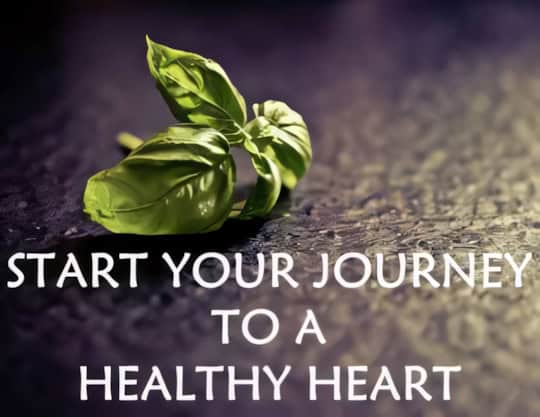
These are some tips and hints that have worked for me. But everyone’s approach to going low sodium will be different. It definitely is not an all or nothing program. You are the only one who knows what you like, your cooking abilities, your willpower, what’s available in stores near you, and what you’re willing to do to eat and start a low sodium diet. Everyone has different levels of skills, tastes, and motivation.
What works for my strategy may not be exactly the program for you. My program concentrates on sodium, fiber, fat, and sugar in order of importance to me. I try to make easy, quick recipes with ingredients that are easy find or locally available.
You can start exploring my recipes here. You are the only one who can develop a heart-healthy routine and regimen that fits you. You can glean ideas and inspiration from many sources, but everything you do needs to apply to you. The taste may not be the same, but you may find you like it. Enjoy it for what it is, not for what you’re trying to replace.
Know what you need to achieve!
Be sure you discuss your new low sodium diet with your doctor. Understanding what your objectives or goals are will lead you where to focus.
Know how much sodium level you should consume per day. When starting out, try experimenting with setting limits for each meal. Try something like 450 mg sodium each for breakfast, lunch, and dinner with a snack allowance, rather than planning the whole day. Also, know how much variation and leeway you have to play with. For example, if you had salt free breakfast and lunch you could indulge more at dinner.
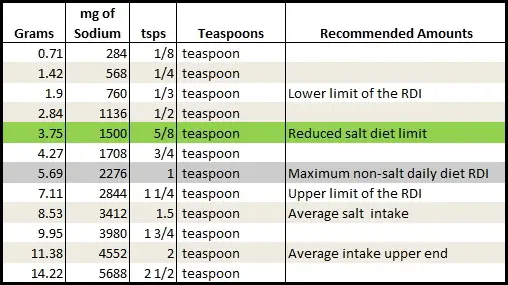
There is a big difference in reducing your sodium intake to the recommended Daily Intake of 2,300 mg or 1500 mg to prevent hypertension or a restricted diet of only 800 mg sodium.
Consult your doctor about using salt substitutes. As they most often contain potassium chloride. Compounding complications for those on blood pressure medication or with reduced kidney function.
Sodium Tracking to Start a Low Sodium Diet
I didn’t see any worth of tracking my sodium intake before I started low sodium living. But I would recommend at least initially tracking what you eat when you start. This is so you can develop an idea, or “feel” of how to structure your daily meals. This will soon become second nature and as you become familiar how to judge values.
There are apps to track your daily sodium intake. But I found them to be rather tedious to input though. So I ended up just writing it down in a little notebook.
Finding Nutritional Values
When looking up items or labels that I don’t have in front of me. I found this website to be valuable to show you the nutritional value of any ingredient or food.
NSA = No Sodium Added
LOSO = Low sodium
Okay now that that’s done let’s get cooking……
The food you buy generally falls into four main levels of sodium and are essential to know when you start a low sodium diet. These include:
THE FOUR TYPES OF SODIUM LEVELS IN FOOD
Unprocessed Foods
Unprocessed foods are things like fresh or frozen fish, poultry and meats. The same with fresh or frozen fruits and vegetables. They contain naturally occurring sodium levels. There’s really nothing you can do to alter it. If frozen verify that it is not sodium enhanced in any way, whether it’s fresh or frozen. The best you can do when preparing fresh foods is to avoid adding high sodium products (sauces) or any added salt.
No-Salt-Added (NSA) Foods
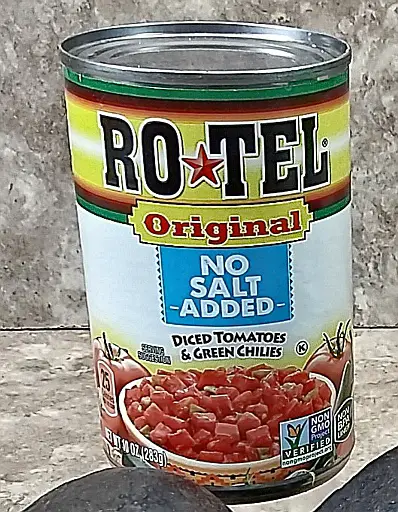
The list of no salt added products seems to be growing every day. From canned and frozen vegetables, condiments to spices and even chips. This includes any foods that are canned, bagged or boxed. They may or may not be marked as NSA. Carefully check initially, as they can be quite different than low sodium.
But don’t worry you’ll soon come to know the staples that you buy on a regular basis and become the new norm. Their sodium content generally cannot be lowered even when making these items from scratch.
Low Sodium Option Foods (Low, Lowered, Reduced labeling)
I’ve generally not had a lot of luck with low sodium options. As “low” just isn’t low enough. A low sodium labeled product like canned soup, soy sauce, and broth can still eat up 1/3 or more of a low sodium (1500 mg) budget. I have found that they usually are not usable in an “as is” form to stay within my personal sodium budget goals.
So while they may not be purposely deceptive, they require careful checking. Although they may be a better starting point if there are no other choices. Many times their impact may be reduced by portion control and “diluting” the product with a no salt option. You would have to judge that based on the amount used and your specific target goals.
Regular Salted Products (Any product not labeled NSA or LOSO option)
These can range from an acceptable level to outrageously high sodium content. These products may be generally unusable as is with far too much sodium added into your target zone for the serving size consumed. For example, a name brand chicken noodle soup has a sky-high 1518 mg sodium per 1-cup serving!
They will need to be either made from scratch or modified by portion control and the addition (dilution) of no salt products. Scrutinize everything in this category. This will most likely need to be either replaced, cut, modified or made from scratch.
MY BEST TIPS TO START A LOW SODIUM HEALTHY DIET
There are no two ways about it. You’re going to be cooking more.
Don’t Sweat It!
Living a low sodium lifestyle may seem imposing at first but it’s definitely not impossible. You don’t have to be master chef Gordon Ramsay or a wizard “from scratch” cook to eat healthy. You will be able to put together and eat a tasty, satisfying and delicious meal.
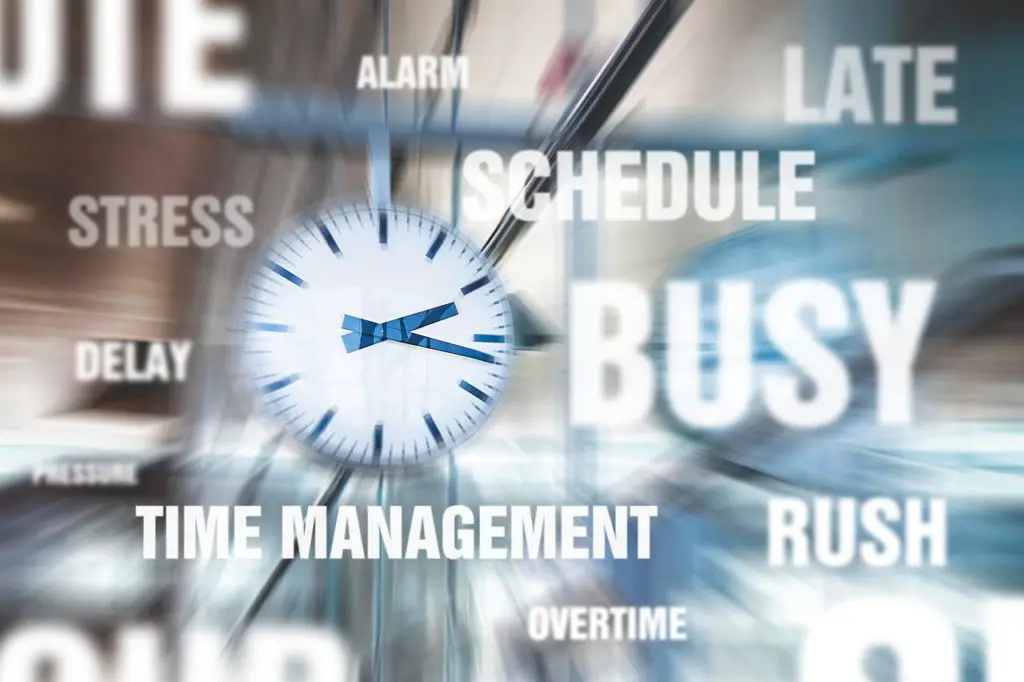
Don’t do it all at once
Some habits are hard to break! But don’t use that as an excuse for your health and stop. They do take some time to change. Start scaling back your salt intake a little bit at a time if need be. Once your body feels used to less, dial back a little more. One time, I had to get something in my stomach so I grabbed a handful of “normal” chips from a friend. My mouth actually burned from the salt as if I was sucking on a salt cube.
When you start a low sodium diet…Be Patient!
About 80% of the changes I made revolved around just a few items that I often eat. Be conscious of all your purchased food that add up through the day. It will take a while to get used to the taste of lower sodium food when you start a low sodium diet.
There’s also a learning curve and it will take a period of time to find and become familiar with low sodium products available to you. It will also take time to convert from a “salted” kitchen to a low sodium kitchen modifying recipes and cooking techniques. Building up a list of new recipes may also take a while and learning to enhance dishes will be an ongoing learning experience.
Take the salt shaker off the table. Do it!
Take the salt shaker from the table. If it’s not handy you’ll be less tempted to use it. I’ve read not to get rid of it for guests. Don’t worry about them, they’ll live. Worry about you, you may not. Get rid of it.
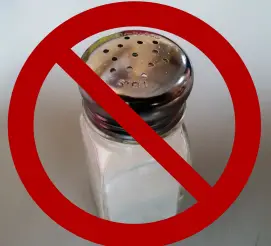
Don’t add salt when cooking
I don’t add any salt to what I prepare. Cook pasta, rice etc. without salt. You’re likely going to add other flavored ingredients and the salt won’t be missed. Cook meats and vegetables by grilling, braising, roasting, searing, stewing and stir fry with unsalted seasonings. About the only time I might use some salt is for yeast breads. But I reduce the salt called for by about 50% and use the Morton’s Lite salt. Even then it is not always required.
Use your grocery’s website for low sodium diet products
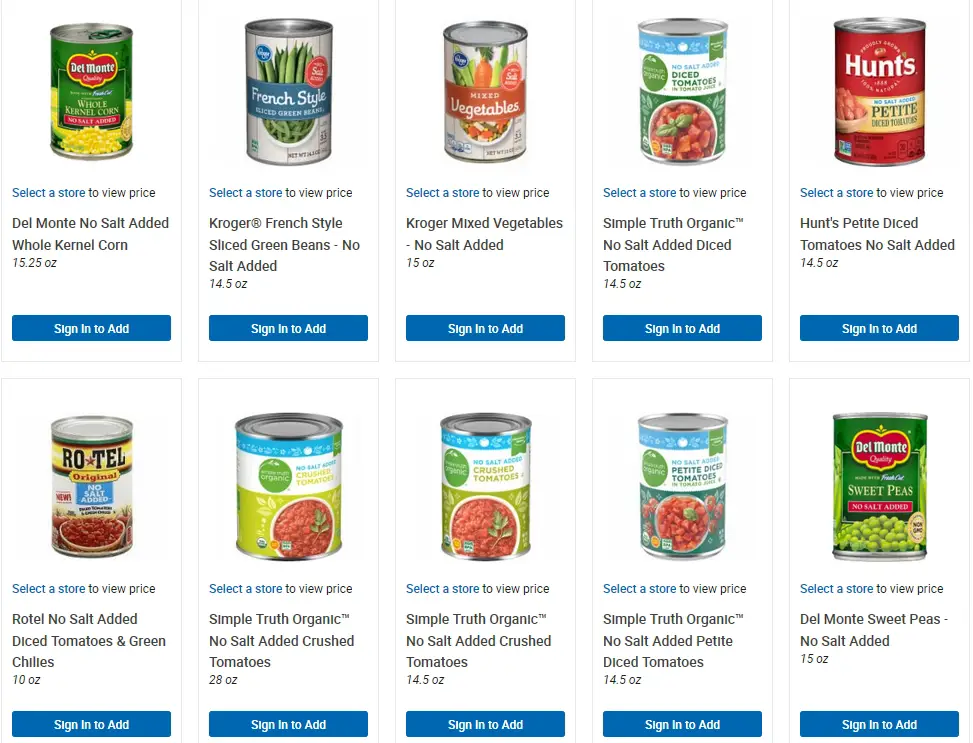
Search for “no salt added” in your favorite grocery stores website search bar. This won’t be a comprehensive list. It will get you well on your way to what’s available and is a great start. By searching online you can develop a list of staples, instead of standing in the aisle hunting and scanning for this and that. Easy, peasy right?
Really understand nutrition labels when you start a low sodium diet
Understanding them is crucial to understand how the numbers can add up through the day and to find hidden ingredients. It’s another whole post to explain it here. Here is a link to the FDA’s how-to of understanding food nutrition labels.
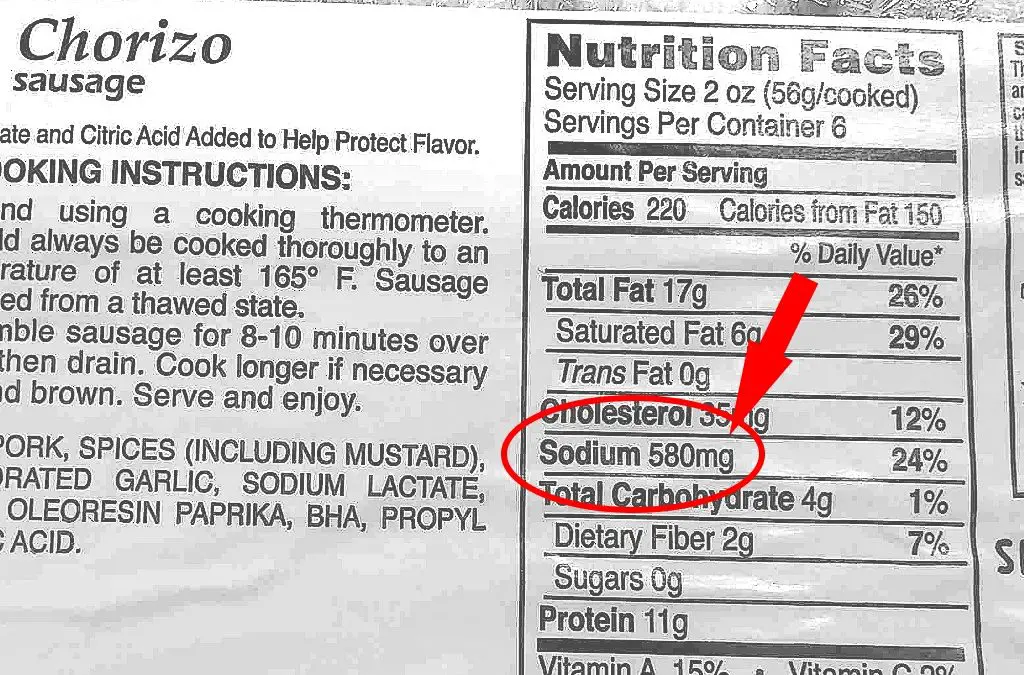
Remember if you have a lowered sodium RDI your daily percentage allowance is higher than listed on the label.
Bread and Baking can be done on a low sodium diet
Bread is very high in sodium in relation to the ratio of serving size. I believe finding an alternative to store bought bread when you start a low sodium diet regimen is essential. Two pieces of whole wheat bread equal an average of 210 mg. So, for a peanut butter and jelly sandwich your sodium is 390 mg, a little over 25% of your budget.
Because of this I recently bought a bread machine and started making my own bread. It has virtually no salt and the overall flavor and quality has become to taste much better to me. It’s so easy to do you can hardly pass it up since processed bread in the store has SO MUCH sodium!
Serving Size matters on a low sodium diet
Remember to watch the serving size on the Nutrition Facts label. If your portion size equals two servings of a product, you’re actually eating double the sodium listed and so on.
Combine lower-sodium versions of food with regular versions
This works especially well for those products you already have on hand or if you can’t find a no salt version like broths and tomato-based pasta sauces. For pasta sauce, you can add NSA or fresh product to dilute the sodium content to the desired level. For broth, you can add water and use portion control or adding garlic and onion or herbs to give it a little punch. You can then purchase NSA products in the future. For whatever it is, think about how you can dilute it. More and more no salt added products are coming out all the time, be sure to keep checking.
Cut processed foods as much as possible
More than 70% of sodium comes from processed and restaurant foods. Choose foods labeled “no salt added”. Look for a reduced or lower-sodium version or make your own. “Processed” can mean many different things though. Not all these foods are bad for your health, so check and compare your labels.
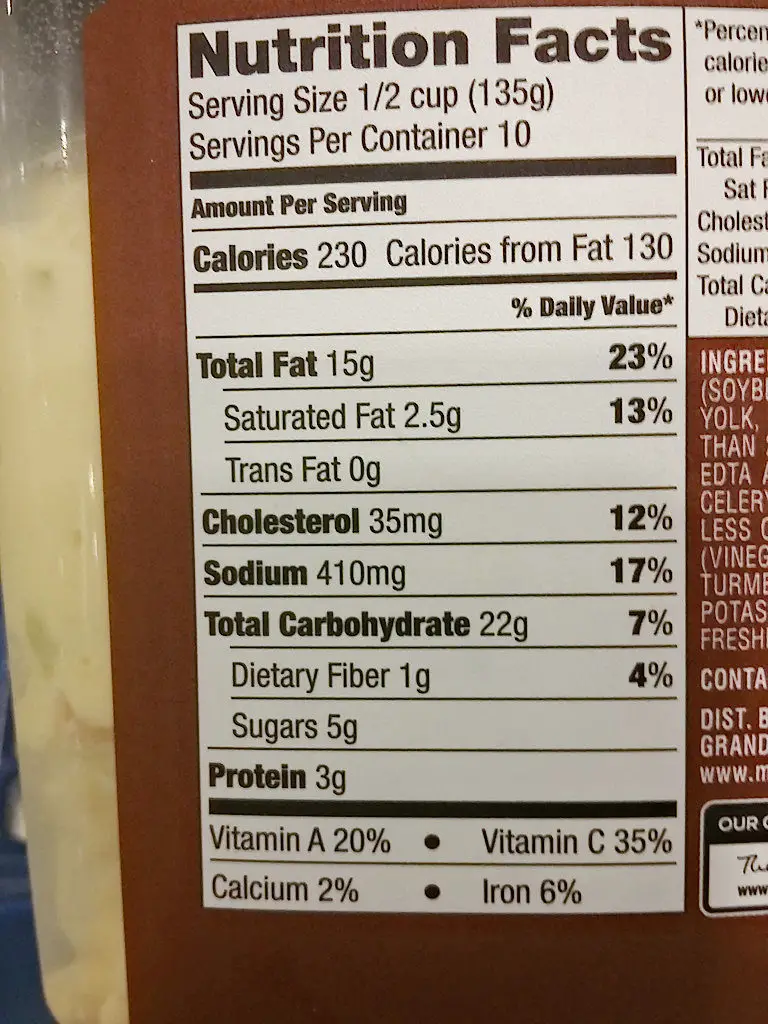
Rinse any canned foods you do use
Canned foods that have salt added may generally be rinsed. If not, they can be donated to someone rather than tossing. Drain and rinse canned beans and vegetables. You can cut the sodium by up to 40 percent. You can even rinse canned tuna, which has about 210 mg per three ounces for the canned-in-water variety removing up to 80% of the sodium down to 40 mg.
Since writing this there seems to be an abundance of no salt added canned products coming out. Take advantage and encourage your local store to carry them.
Condiments frequently have a very high sodium content
Soy sauce, salad dressings, dips, pasta sauce, ketchup, salsas, mustard, and pickles are usually loaded with sodium. Check all your existing items. Get rid of or give to friends and family those items that have a high sodium to serving ratio. Most all have an NSA, reduced- or lower-sodium version these days. And you could still always make your own. Mind the soy in any version though.
(My personal quick tip: Sriracha has minimal sodium and a large “kick” per serving. I like to take my NSA ketchup bottle and add a healthy squeeze to it for spiced ketchup.)
Existing frozen meals in your kitchen
Frozen dinners, snacks and pizza, etc. are almost always high salt content. Sort and check if they are acceptable (doubtful), clean out your stock if not. Ask a friend or neighbor who would want them rather than throwing them away.
Pick it, Skin it, Cut it
Choose lean cuts of meat. Remove skin from poultry and cut off extra visible fat from all meat. This will help reduce the saturated fats that elevate cholesterol. Remember lean is not a free for all, portion meats to no more than ¼ of your meal.
Examples of lean cuts of meat are:
When buying beef look for: Eye round, top round, round tip, bottom round, sirloin, top loin, tenderloin, and flank. For ground beef, choose 95% lean ground beef.
For pork look for: Tenderloin, top loin roast, loin chop, sirloin chop, rib roast or chop, and boneless ham.
Limit or stop consuming soda and most juices
Sugar should be limited to 25 grams for women, and 39 grams for men. Just one standard cola drink has 39 grams and some juices are even higher. Fortunately, I’ve never been a big soda drinker but I did like my juices. How many and what do you drink?
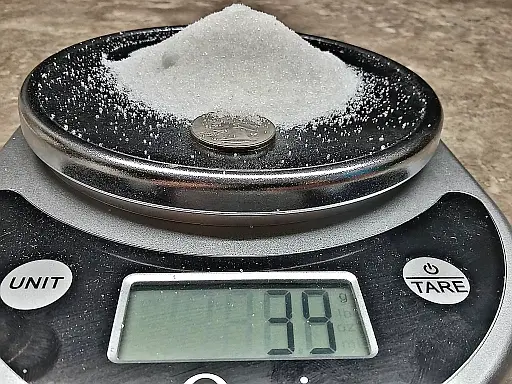
Salty Snacks don’t mix with a low sodium diet
Most snacks like chips, pretzels, etc. are sodium bombs. They’re just too high in sodium, it’s best to toss them or give them away and not purchase more. There’s no way to bring down their sodium content. Look for NSA or reduced options. Many brands are coming out with low or no salt versions. Encourage your store to carry them.
Have nuts and fruits readily available
Make them easier to have available than high sodium, fat-laden snacks. Variety is key to starting a low sodium diet routine. Mix up the fruit and nut types. For fruits, mix in some whole and cut fruit also. I’m up to three fruits a day and keep a bowl of (unsalted) nuts on my desk to give me that “crunch” every once in a while.
Cook ahead meals or ingredients
Many times when I’m preparing a meal, I’ll cook some plain chicken breasts and rice beside it. I can then freeze them individually. I can then take them out to either spice it up with rice and veggies. Or shred for a salad for those busy nights. Since you’re cooking, might as well cook two meals at once.
An easy routine of meals helps to start a low sodium diet
This worked for me when beginning to start a low sodium diet lifestyle. There is much to consider and learn when you’re first starting and may feel overwhelmed. Choose some meals that don’t need much forethought. You’ll have the items on hand and only the type of preparation is required. Try to make a chicken night, salad night, etc. in the beginning.
Learn and master two or three go-to staples
Having dishes when you start a low sodium diet, that you can make easily in your repertoire (not having to reference a recipe.) Will end the likelihood you of grabbing something easy and salt soaked to eat.
Breakfast Cereal on a low sodium diet
Cereal is another sleeper product to watch out for when you start a low sodium diet. I don’t know about you, but I eat more than a cup full of cereal. So if it has more than say, 150 mg sodium per cup, I don’t use it. My personal favorite is Frosted Mini Wheats at 0 mg sodium per serving and has nearly 25% of your daily fiber!
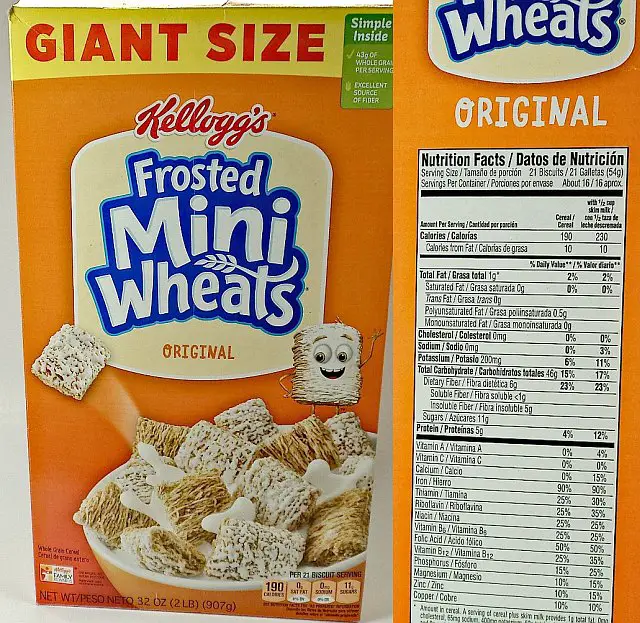
Be careful of anything labeled low-sodium
When you start a low sodium diet things like soy sauce labeled as reduced, less, or lite sodium can be tricky. They still may contain an average of 550 mg sodium per tablespoon. One third (⅓) of your salt budget.
Be careful of anything labeled as lowered fat
They often have a higher salt content to make up for the reduced fat and oils.
Be wary of any ingredient that has sodium included in that multi-syllable word.
It can show up as the following or more.
- monosodium glutamate or MSG
- baking soda
- baking powder
- disodium phosphate
- sodium citrate
- sodium nitrate
- sodium phosphate
- sodium hydroxide
Buy seasonings and herbs without salt
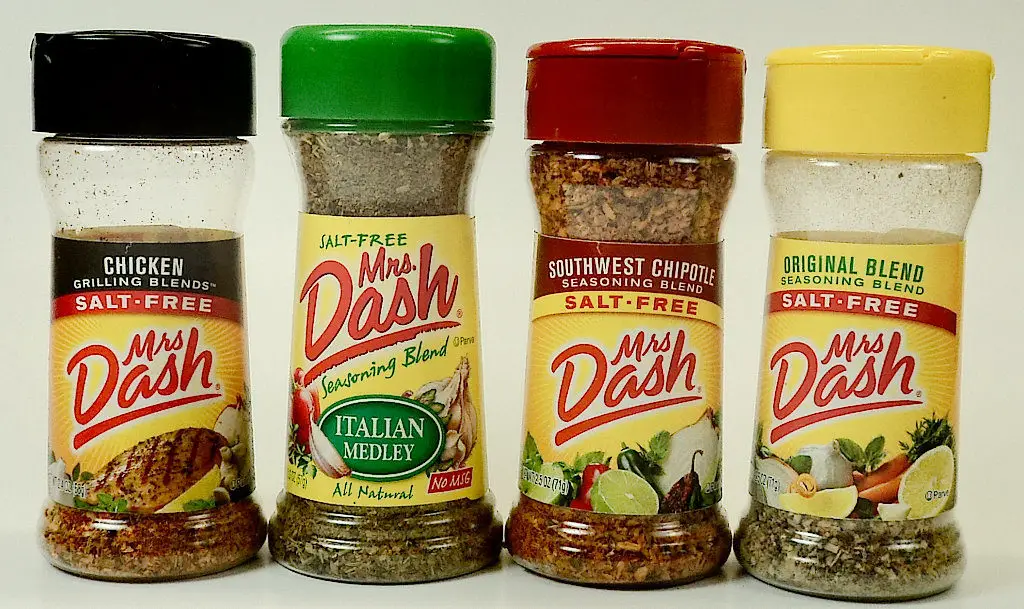
Be careful of seasonings that are labeled appearing at face value for example “Chili Powder” as it still may include sodium. Buy pure seasonings. If you feel that you have to add salt, you can add the type and how much yourself. You get to control it when you start a low sodium diet. Use onions, garlic, herbs, spices, infused oils, red pepper flakes, citrus juices, and vinegar to add flavor to vegetables and lean meats. Our recipes and tips can help!
If you do use salt on a low sodium diet
I am only relaying this particular information to people who can use some salt. I do not use any additional salt in my recipes. Use sea salt: People tend to use less sea salt versus table salt. The larger crystals set on your tongue differently creating a different sensation. Also, when using sea salt, 1 teaspoon of regular table salt contains more sodium than 1 teaspoon of sea salt. Think of a tub of cinder blocks as compared to a tub of sand.
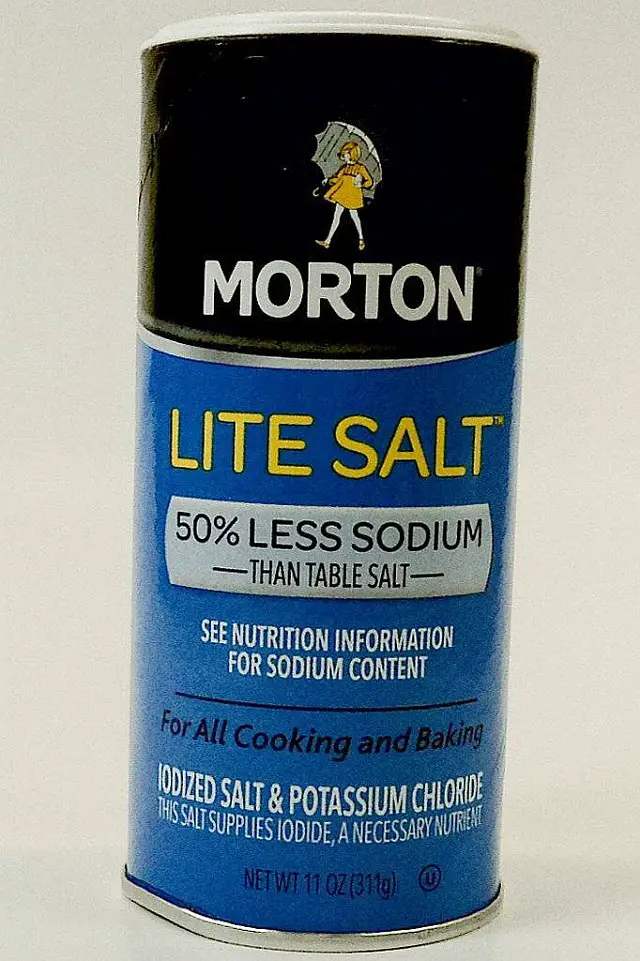
Morton’s also has a lite version of 50% less sodium. But you need to be aware that it is higher in potassium. If you’re watching your potassium levels that may rule this option out too.
Look for products with the American Heart Association’s Heart-Check mark
The American Heart Association Heart Check Mark, indicates foods that are part of an overall healthy diet. While the Heart-Check mark doesn’t necessarily mean that a product is low-sodium (It still may be high for a 1500 mg or lower budget.) It does mean that the food meets AHA’s sodium guidelines to earn the Heart-Check mark.
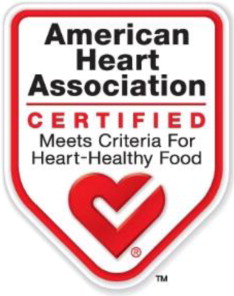
ARE YOU READY TO START A LOW SODIUM DIET?
Well, those are my tips and hints and what I did to start a low sodium diet. Don’t worry it quickly gets easier and becomes second nature. You’ll soon be able to do it too. I try to make easy, quick recipes with ingredients that are easy find or locally available. You can start exploring my recipes here.
Your taste for salt is acquired, so it is possible to learn to enjoy less. You may notice it’s not there, but your body won’t crave it. By gradually decreasing in your use of salt, your taste buds will soon adjust. Within a few weeks of cutting back on salt you probably won’t miss it, and some foods may even taste too salty. You will soon enjoy the taste of the food itself with heart-healthy benefits.
Leave a comment on what you think or what you do to reduce salt and stay healthy.
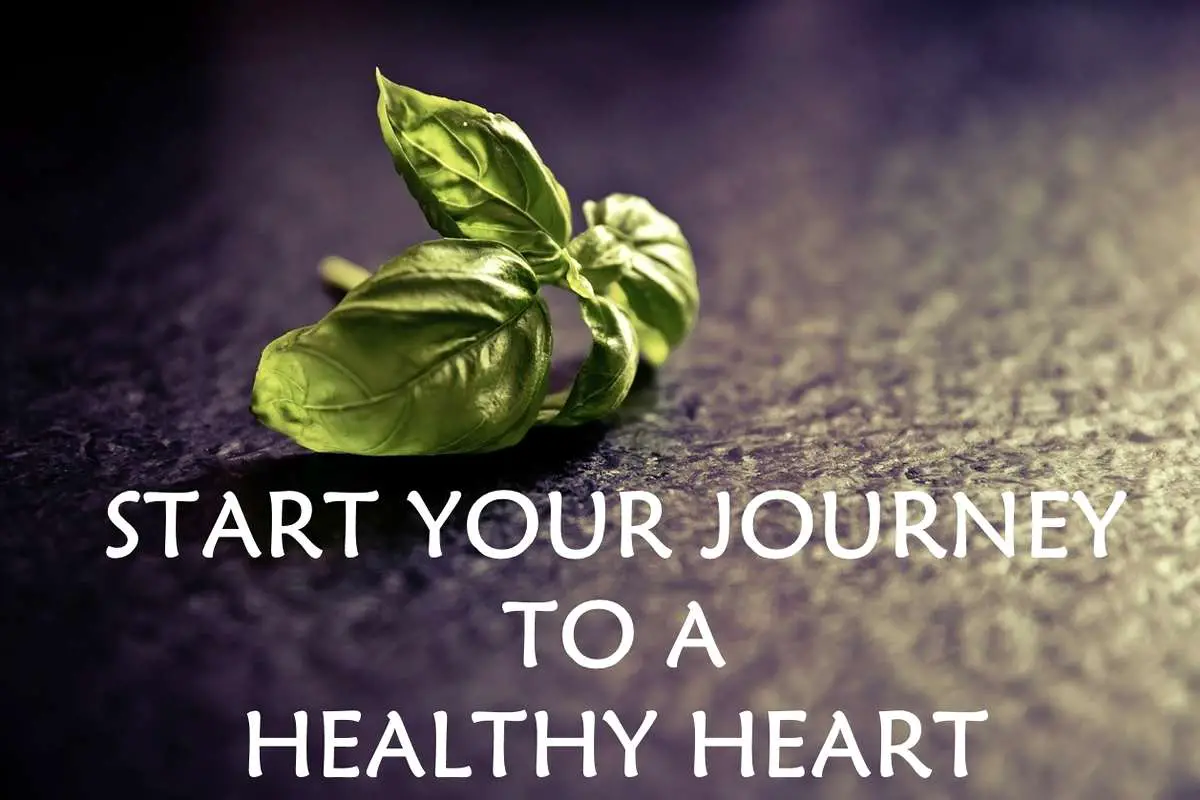

Hi Bill, looks like I’m late to the emails, but had to add to comments. I have HBP and taking plenty of meds. Not only are they for the blood pressure, but kidney and heart issues. I started low sodium diet years ago, but didn’t keep up with it. I started back again after all these issues surfaced about a year ago, and so glad I found your recipes! I agree with so much that you wrote in how to get started on the diet, and it encouraged me I was on the right track. It’s great to find “options” of low salt or no salt items in grocery stores now as opposed to a couple of years ago. I avidly check labels and it’s scary how much sodium is in some of my favorite things. So glad my husband is behind me in what I prepare (going out to eat is something in the past!) so i cook (thankfully I enjoy cooking!) and finding easy ways to reduce sodium or none at all is fun. It amazes me when people say “no salt in this?” They don’t even realize we can survive with out it! So thank you for your recipes, I follow you and your advice as well. Nice to know not alone with this issue and the challenge of making food taste great without salt!! Stay well
Hi Patti, Sounds like you are well on your way and have things in hand. It just becomes second nature. While I enjoy cooking and the challenge of making a dish low sodium. It may not be convenient all the time, but I always have something tucked away in the freezer for those times.
Thank you for the kind note and enjoy!
Hi, Bill, Thanks for such a wonderful website. I especially enjoyed your thoughts on starting a no salt diet. I noticed my blood pressure was going up recently and made an appt. with my MD. Before I could get into see him, I had a TMI. Now he has told me to go on a no salt diet. And it has been challenging. I am so grateful that I found your website with all your wonderful recipes. and tips.
We live in a rural area with limited shopping. We do have a small Walmart which does not carry many NSA items. And the grocery store and Aldi’s do not have any NSA items. I was wondering if you could recommend a website (besides Amazon, which seems very pricey on NSA items) that has reasonably priced NSA items.
Thanks again for all your hard work on the website and the great service you are providing.
Hi Shari, Sorry to hear about you having a TMI. Actually, my Walmart is pretty good on NSA items along with Meijer. My local Kroger stores have been letting me down lately, not carrying the items as they used too. Maybe it’s just “old school” me, but I dislike buying food items online unless it’s more of a “specialty” item. So I rarely order online, or really have any good recommendations. I try to keep recipe ingredients that can be found in the local store. Maybe ask the store to stock some? I am always amazed how quickly the stock of NSA products seem to go. So, it would be to their benefit too. Maybe Walmart online? Sorry I don’t have a better answer and I hope you get better and stay well. Bill
Shari, I just recently was diagnosed with CHF and was told to drink 64 oz of water daily as well as go on a no or low salt diet. I’m doing better on the low sodium diet than the 8 glasses of water per day. But, I’m working on it. Shari, I am unable to go into Walmart to shop personally like I was used to doing before. So, I have been shopping online from Walmart for my groceries. I recently moved into a City apartment where Walmart and several other stores do delivery. I know that delivery is not available in rural areas, but Walmart will also mail your orders to your home if you aren’t able to pick them up. Also for items that your local Walmart may not carry. I know they don’t ship fresh or frozen foods, but for all the canned goods, etc. they are able to ship. So, when I start running low on my essentials, I go online and order online. I have shopped Walmart for many years so I pretty much know the products that I use and like from there. Plus, online I can read the Nutrition labels to see how much sodium is in each serving. It’s easier to read those labels from my home than it was when I shopped at the store itself. And Bill, I have copied some of your recipes that look good to me. Thank you for what you are doing online. I read some of the information on your website as well, and will continue to do so. I appreciate your effort and thank you for sharing your experience . I will continue to do so as I go along this new journey I am on.
Bill,
Lots of luck with the surgery and recovery.
I also cringe when the judges on “Chopped” criticize a chef for not using enough salt. Secondly, I think many chefs smoke which dulls their taste and encourages them to use more salt.
An episode of higher BP than my normal has started me on the low salt, no alcohol, and no caffeine diet as per MD. Looking for useful sites has brought me to yours which seems very useful. It would be nice to be able to get direct emails from your site in the future.
Continue with this excellent info after your surgery.
Doroth
Hi Doroth, I also cringe when chefs on tv basically throw handfuls of salt in a dish. I will be looking into email notifications in the future. For now you can follow me on FB where I post when I have a new recipe up. https://www.facebook.com/tastyhealthyheartrecipes
Thanks for your comment.
Bill
Thanks for the recipes. I have been doing low to no sodium for about 2 months. Found your site today and now my resolve is unwavering. Can’t wait to try some of your dishes.
Welcome to my website Matt hope you enjoy!
Bill,
After my last physical wherein my BP was 182 over 80, my doctor immediately put me on BP meds. Not wanting to depend solely on meds I decided to explore the world of low sodium diets and proper cooking techniques. I have spend hours searching for one or two decent sites to aid in my “get healthy” campaign. High sodium, high potassium and not enough water are my problems. Well low and behold, here goes the cavalry, Bill to the rescue! I went thru the panty and gathered up all the high sodium items and donated them to a food bank. I am an avid and fairly decent cook, love experimenting with different spices and preparation techniques. You have gained another disciple.
BTW: After two weeks of a very low salt regiment and minimal BP meds, my BP is at 145 average over 65 average. Not too bad for 77 years of age. I don’t not smoke cigarettes and limit myself to a cigar on Sunday during the football games. I only consume a glass of red or white wine with some meals, otherwise its water. Look forward to your continued quest for “Healthy Living”. Thanks so much for sharing your knowledge and appreciate your time & effort. “Live long and prosper”!
Bob.
Thanks for your awesome comment Bob! Comments like this truly give me the inspiration to keep going. I remember going through my pantry and was astounded once I became truly aware. I almost felt bad giving it to other people. HAHA
Thanks again
Bill
Terrific article
thanks for sharing
Well, fatigue isn’t one of the things you noted as a bar to cooking for myself, but I’ve come to accept that I can’t eat out because the high-end grocery store chef-prepared foods that say they are low sodium are unreliable. Some chefs have a heavy hand with the salt. So the labels aren’t honest, even when there are labels.
Hi Babs, I very rarely eat out anymore or buy the prepared meals, as I agree, sodium levels just can’t be trusted. I just cringe watching these cooking shows and the chef throws what looks like a handful of salt in the dish.
I generally have not had fatigue issues except by way of my hip. Which I am currently in the process to get it replaced. The pain just bushwacks me and has really slowed me down.
Stay safe, hope things get better.
Bill
Thank you so much for your recipes! I tell people now that “I eat to live” not “live to eat” anymore. Eating healthy is ver satisfying I’m finding out. Very grateful for you!
Haha I tell my friends kinda the same thing. “I eat to live and when I do it’s going to taste good!”
I just want to say that I am so glad to have found this – Bill’s recipes and ideas are great – I am having major surgery in a few weeks and have to get my blood pressure and heart rate to a proper level – I am now on a mission – I wish that Bill had a cookbook –
Thanks
Dennis
Thanks Dennis, Cook book sometime in the future. I am in the same boat as you next month for surgery.
Bill
Thanks – good luck with your surgery
very nice post, i certainly love this website, keep on it
Thanks so much for sharing this information! i AM SO GLAD i HAVE FOUND ALL THESE AMAZING IDEAS, HINTS AND RECIPES!
Thanks Marsha!